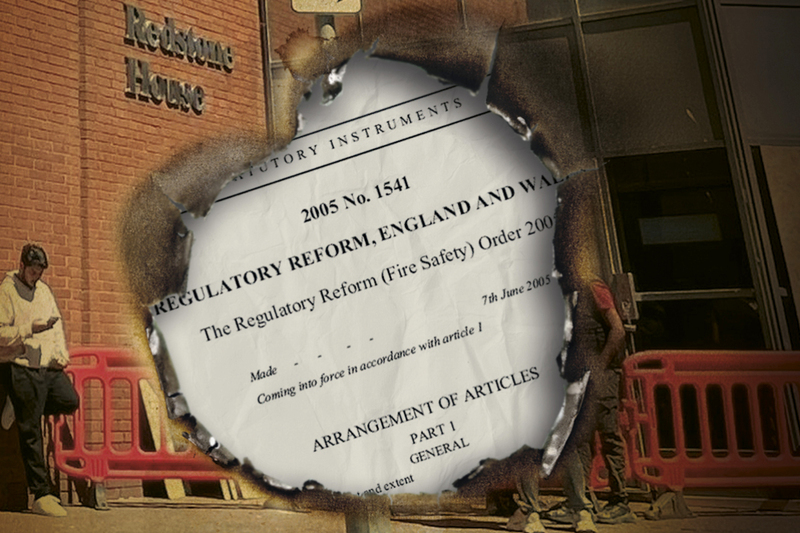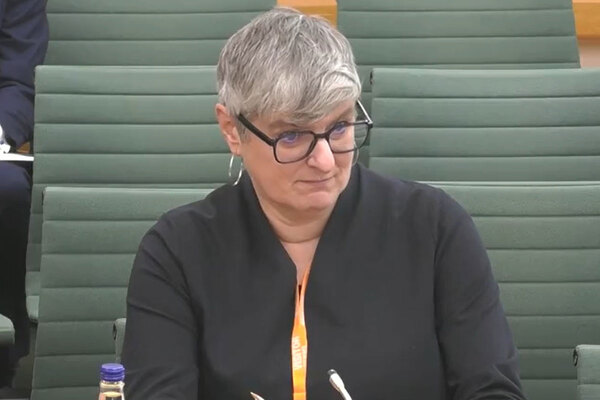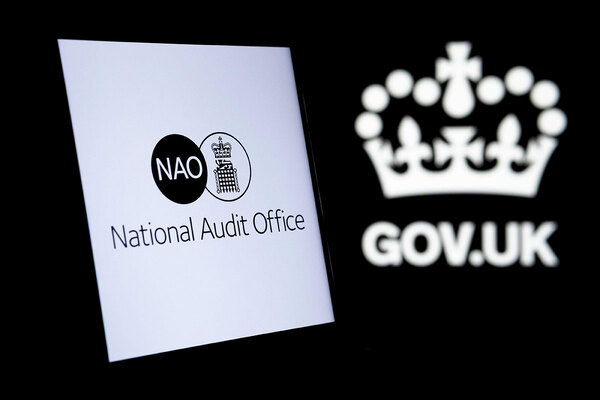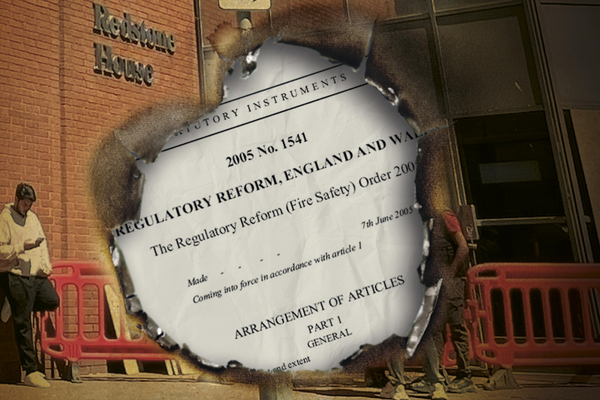‘Decanting’: how to deal with blocks that are too unsafe to occupy
As we have got better at discovering fire safety defects post-Grenfell, emergency relocations of residents are becoming more and more common. Peter Apps investigates how landlords should best approach decanting
Imagine waking up in the morning to a knock on your door, to find a police officer and a firefighter telling you that you have two hours to box up your possessions, and after that you’ll never be allowed into your home again.
It seems like a bad dream, but this is precisely what happened to residents of Redstone House in Harlow, a converted office block with a history of serious fire safety issues, on 7 May this year.
The property was slapped with a prohibition notice by Essex County Fire & Rescue Service, which warned of “significant” fire safety defects that could mean “potential for increased fire spread”, and residents were told they had to leave immediately. Residents have described the process as upsetting: it left people with little time to pack their belongings before being sent to temporary housing. Some have not been able to return to collect larger items and have had to start again with virtually nothing.
“We were all told we had to leave the building by midday,” says one resident, who asked to remain anonymous. “We had two hours to grab some stuff.
The police were there to make sure we left without any hassle on our side.”
Many have since struggled to find affordable alternatives nearby and, with their time in temporary accommodation limited and other nearby affordable homes thin on the ground, face a ticking clock towards street homelessness.
“I had a breakdown at work over it,” the resident – who works in a local school – says. “I was breaking down saying, ‘I don’t know what to do.’ I was sobbing.”
The block was not a social housing property, but was rented out by private landlord Beyond Infrastructure Ltd, which did not respond to requests for comment from Inside Housing.
A Harlow Council spokesperson said it “acted swiftly and decisively to ensure families were not left without a roof over their heads”, with individual cases “assessed to determine our duty to provide permanent housing”.
The impact of decanting
While Redstone House was in the private rented sector, the experiences of some social housing residents in similar situations have also been traumatic. Recent examples of emergency decants – as the process is referred to in housing management – have been disturbing to hear about.
When residents of Barton House in Bristol were suddenly told to move out of their block due to structural issues, the process left them traumatised and suffering from physical health conditions, according to a report by medical campaign group Medact.
Clare House, in east London, was evacuated in 2022 due to fire safety defects, and residents spoke of their frustration at a perceived lack of communication from the housing association and at being moved “from pillar to post” as they awaited rehousing. Clarion Housing Association said at the time that it worked on a “bespoke basis” with every resident, including offering financial and mental health support.
Emptying blocks, sometimes at very short notice, is something that housing managers have had to do much more frequently in recent years. As the inspection and investigation of social housing blocks has ramped up in the aftermath of 2017’s Grenfell Tower fire, the number of buildings that have to be emptied for safety reasons has been rising. Analysis of government data by Inside Housing shows that in 2016-17 (the year before the Grenfell Tower fire), England’s fire authorities served a total of 11 prohibition notices on purpose-built blocks of flats, with just eight more the next year. But in 2018-19, the figure jumped to 170 prohibition notices. It has remained high ever since (albeit with a dip in 2020-21 due to the pandemic).
Overall, since the Grenfell Tower fire, 419 purpose-built blocks have been prohibited by the fire service – meaning upwards of 10,000 people are likely to have been made suddenly homeless by the discovery of fire safety issues in their building (this is a conservative estimate based on average number of flats per block and average household size). The total number of people displaced will be higher still as many buildings will have been emptied by a landlord in anticipation of a prohibition notice being served.
The number of buildings impacted is likely to rise still further as the Building Safety Regulator (BSR) works through its Building Assessment Certificate process, with thousands of properties to be assessed by the regulator over the next couple of years.
This has posed a major problem for the social landlords whose blocks are impacted – and it is not always well-handled. A Spotlight report by the Housing Ombudsman published last year notes several serious instances of failure throughout this process, such as hotel bills not being paid by the landlord, leaving residents homeless.
The Grenfell Tower Inquiry also highlighted failures to respond to the need for emergency rehousing after the fire, with the situation described as “wholly inadequate” and leaving residents with an “acute sense of being completely isolated”. So what can the sector do to better manage this issue?
“Sadly, we know from our casework that social landlords are typically very poor at doing this,” says Andrew Brookes, a partner at law firm Anthony Gold. “All the social landlord seems to be fixated on is getting the people out as quickly as possible without really thinking through the impact that’s going to have on whole communities.”
He says that residents are frequently given desperately short notice about decanting, even though landlords have often known about the underlying problems for months, if not years. Communication with residents following the decision to empty the building can also be patchy.
“Residents are often given so little time and so little information, even about critical things like how long they will be out for,” Mr Brookes says.
“It’s unsettling enough for people to have to move, but it’s even more unsettling if there’s no indication of how long this is going to take.”
While Article 31 of the Regulatory Reform (Fire Safety) Order 2005 gives a fire authority the power to prohibit the use of a building for safety reasons, this has no impact on a resident’s tenancy. In theory, they still have a right to live in the property, although the tenant risks committing a criminal offence if they do so. “The landlord cannot, there and then, end the tenancy,” explains Mr Brookes. “Decanting essentially must be done by consent.”
In fact, the law leaves many gaps. There is no official guidance or regulation on what sort of accommodation residents should be entitled to once they are moved out, or what their rights are with regard to accessing the property to retrieve possessions.
What does exist is guidance published by the Housing Ombudsman, setting out expectations for how residents should be treated when social landlords decant a block. This includes the provision of clear information “about the reason for the decant, the expected duration, and when they can return to their permanent residence” and a single point of contact, who can be reached out of hours and can act on urgent or immediate issues.
It also recommends that social landlords develop support plans “where appropriate”, which consider “any protected characteristics and vulnerabilities”.
“Landlords need to make sure that residents are treated like people and not numbers on a spreadsheet,” the ombudsman says.
While this guidance does not have legal standing, Mr Brookes says that if residents complain about it being breached, “that is likely to result in a finding of maladministration”.
Following guidance in practice
This is, however, a difficult challenge for social landlords, especially in high-demand areas like London. There is simply not always enough available accommodation to meet needs, especially when many people are suddenly evacuated at once.
Joanne Drew, co-chair of the London Housing Directors’ Group, says that social landlords’ aim should be to act strategically to avoid an emergency decant: “You need to be giving yourself time to decant or decommission buildings, rather than acting in a crisis.”
“That gives you time to work out housing solutions, including through use of new build homes, existing voids, nominations to housing associations or acquisitions. But if it’s an emergency, then all that will be available will likely be hotel accommodation, which is expensive and very hard for residents.”
Kirk Douglass, building safety manager at Gateshead Council, has worked on four building decants over the last three years, including one where flood damage means residents will not be able to return home.
“Communication is key,” he says. “It really helps to offer translation services across all channels from the outset. The ability to impart information to residents who don’t speak [much] English is very reassuring.”
However, managing expectations about rehousing is hard. “Trying to meet the wishes and expectations of the residents for their next home is also very difficult. Everyone wants their ideal home,” he says. “While we may have void properties, it takes time to ensure they are to Decent Homes standards.”
Danielle Gregory, policy and campaigns manager at Tower Blocks UK (TBUK), has published a checklist guide for emergency and planned decants. She began campaigning after being moved out of the Ledbury Estate in Southwark for safety reasons in 2017. “There’s a massive amount of social work that needs to go into moving people out of their home, but too frequently landlords just come at it from a building safety perspective and just view people as objects that need to be moved out of the way,” she says. “It’s often so chaotic, there is so little information coming from the landlord, and no response to difficult questions.”
The TBUK guide contains a list of things for landlords to consider, including regular bugbears such as support for travel costs. It also advocates for standardisation nationwide. “There needs to be a uniform national response to the way that decants are carried out, and the government needs to step in and not leave local authorities to deal with it,” Ms Gregory says.
It is understood that the government is currently working on decanting policies as part of its ‘remediation acceleration plan’, but this cannot come soon enough. As more buildings pass through the Building Assessment Certificate process, more issues will be discovered, and some of these will surely require emergency decanting.
Moreover, the advent of Awaab’s Law will require social landlords to find temporary accommodation if they can’t fix certain “emergency hazards” within 24 hours. This is unlikely to lead to entire blocks being decanted, but it will still mean an increased flow of households into emergency alternative housing.
“This is part of the preparation for Awaab’s Law which I think the sector hasn’t fully woken up to,” says Mr Brookes. “They are going to have to have more temporary accommodation available; it’s going to be a much bigger part of their management role.”
Coping with this will be hard for residents and landlords alike. But if landlords have clear policies in place, a commitment to good communication and an understanding of residents’ needs at a difficult time, it can be hoped that no tenants in social housing will go through what those in Redstone House experienced.
Sign up to our Best of In-Depth newsletter
We have recently relaunched our weekly Long Read newsletter as Best of In-Depth. The idea is to bring you a shorter selection of the very best analysis and comment we are publishing each week.
Already have an account? Click here to manage your newsletters.
Latest stories











